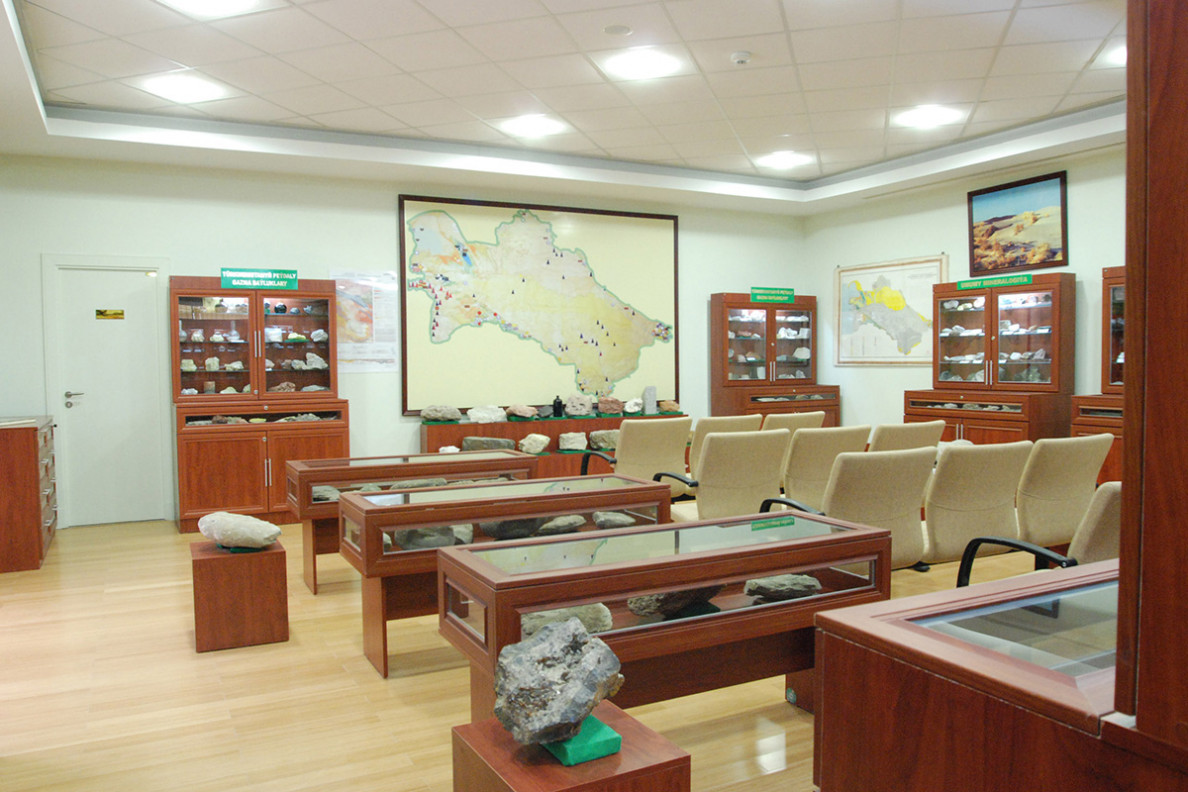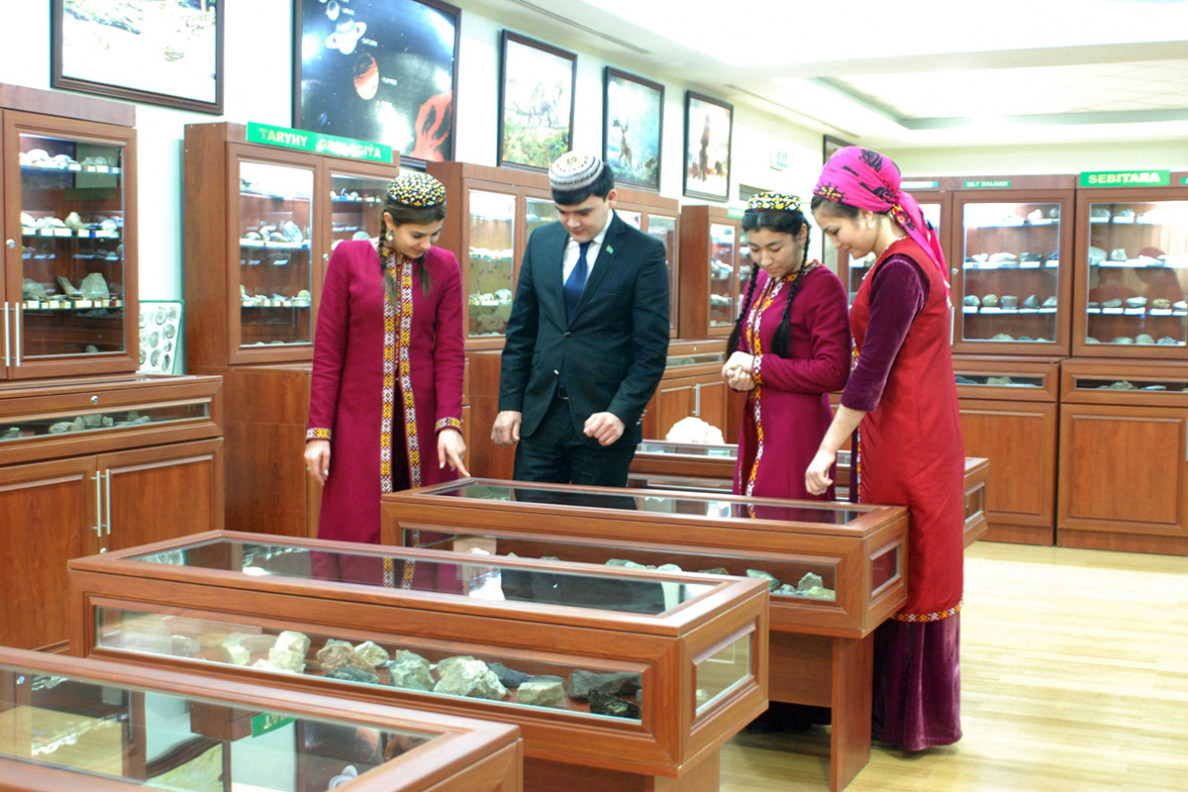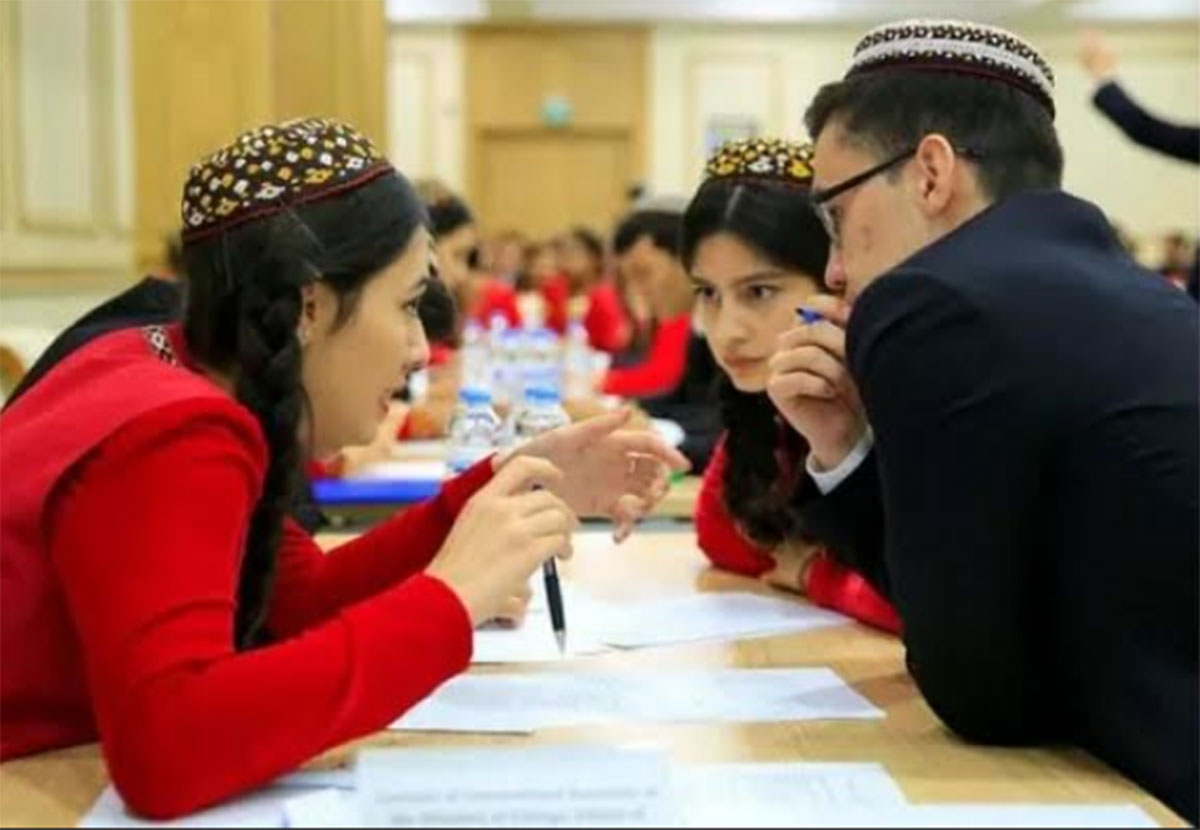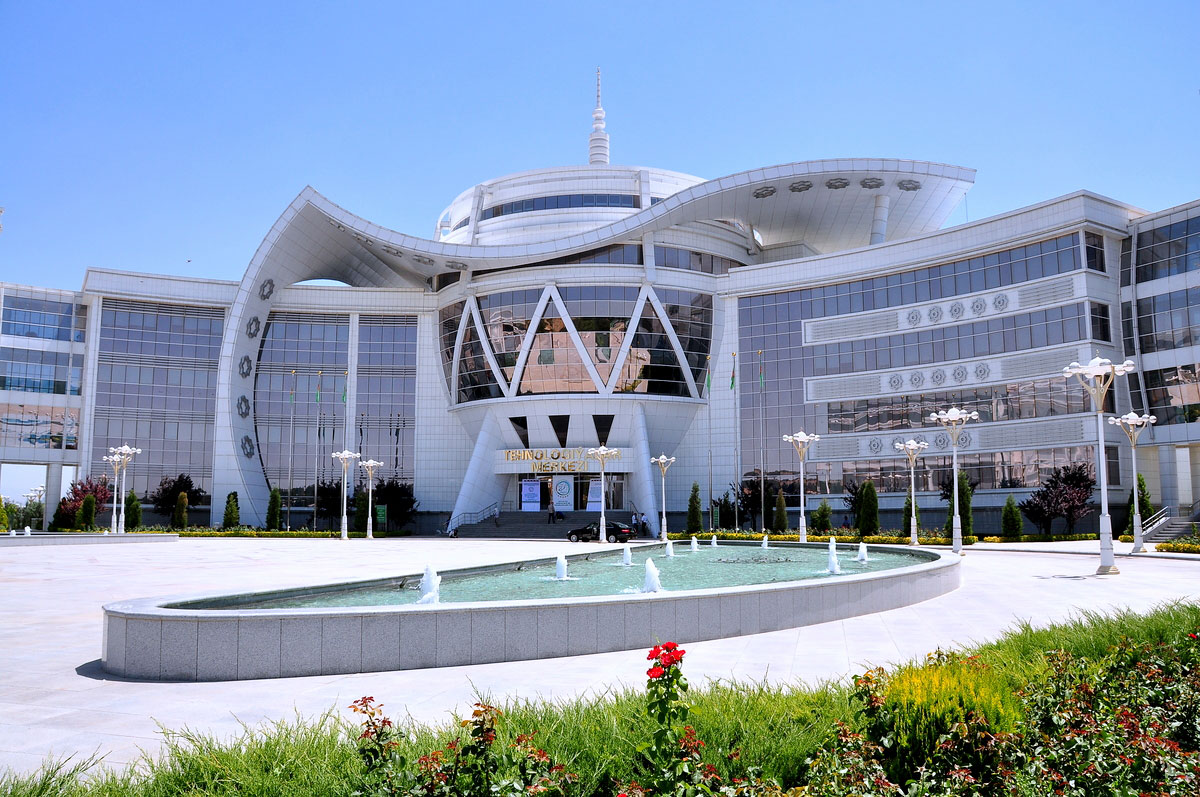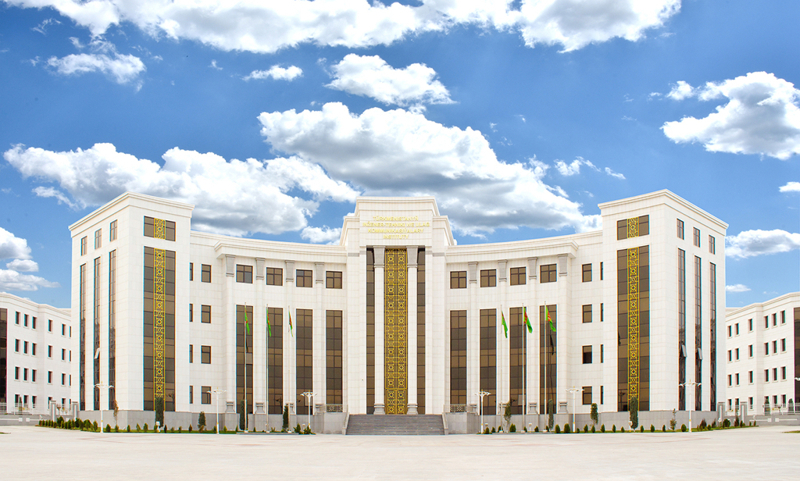The museum of the Geography Department at Magtymguly State University is home to one of the richest rock collections in the country. At present, it boasts over 1, 200 specimens of rocks, ore minerals, and fossils. The museum regularly hosts tours and lessons on mineralogy, general geology, and natural history for Geography students. Natural setting displays, maps, charts and a diversity of exhibits are a unique window onto our country’s natural resources, rocks, and natural landmarks.
The collection can be broadly divided into two parts. The first section offers invaluable insights into the country’s natural wealth, historical and general geology, endogenous and exogenous processes occurring beneath or on the surface of the Earth. The second section – more spectacular and fascinating – provides an intriguing glimpse into natural features of all the nine state nature reserves.
In particular, the museum extensively explores natural monuments in the Gaurdak-Kugitang area: picturesque gorges, waterfalls, native plant life, natural landscapes, relict trees, and karst lakes.
Large-scale displays, dioramas, give students the chance to closely study and view natural attractions, for instance, karst caves of the Koytendag known for a wide diversity of dripstone formations, unusually shaped stalactites, stalagmites, and stone flowers. The museum also showcases the area’s another unique natural monument – the Dinosaur Plateau, which is home to 650 footprints left by these ancient reptiles. The Jurassic Park display features the dinosaurs that lived in the Jurassic Period.
The museum also provides a window into natural marvels of the Kopetdag Range, stretching for more than 600 kilometers. First of all, it is the rare paleontological treasure – fossilized ancient camel footprints made 2.5 million years ago that were found in the Neogene sandstones in Gyaurli at the western edge of the Range.
The active mud volcanoes are distinctive natural features in Western Turkmenistan. Some of them, which look like real magmatic volcanoes (Akpatlavuk, Geokpatlavuk), are geological wonders and natural landmarks of universal significance. Boyadag, “a mountain of colors” is one of the largest mud volcanoes in the Pre-Balkan mountain area nearby Gumdag. The geological museum features the volcano in a vivid, natural setting display. Large-scale topographic maps and photographs were used to create it. The display gives a realistic and accurate portrayal of the volcano.
The Garabogazgol Gulf, a unique natural landmark of Turkmenistan, is an extensive, shallow lagoon with a very high salinity level, surrounded by desert areas. It is extraordinarily rich in mineral resources used in the chemical industry. On display at the museum are enlarged satellite images and finished products of the Garabogazsulfat Plant showcasing the Gulf’s natural wealth.
The geological museum with its systematic collections of rocks, dioramas, maps, enlarged color photographs is now one of the best in Turkmenistan.
Anatoly BUSHMAKIN, a geological engineer, PhD in geological sciences and mineralogy




